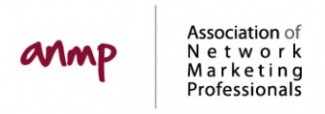And Why Network Marketing is No Relation
By Len Clements © 2012
Had Charles Ponzi and Bernie Madoff switched birthdates, Ponzi would likely have been sentenced to luxury apartment arrest for perpetrating a “Madoff Scheme”. Indeed, Ponzi bilked investors out of a mere $15 million back in the 1920s (about $154 million in today’s dollars), and even managed to pay a good chunk of it back. Madoff madeoff with about $50 billion – that’s with a B – in literally today’s dollars! This makes Mr. Madoff Guinness eligible for the world record as largest Ponzi Scheme in history – well, until around 2016. That’s when something called Social Security will officially meet the definition.1
The guy2 who popularized the pyramid scheme was probably named “Ogg” (yes, with two g’s) and drew his circles on a cave wall.
Although doomed at birth by the same disease, called mathematitus, pyramid and Ponzi schemes are in fact a very different organism.
A Ponzi scheme differs from a pyramid in two primary ways. First, a Ponzi usually has a single administrator (perpetrator) who acts as the hub for all transactions. A pyramid scheme is usually initiated by someone, but then he initiates others to perform the same recruitment process. Eventually everyone in the scheme not only invests into it but does so with at least the intention of enticing others to invest as well. A Ponzi has one prep and many victims. A pyramid has many perps and many victims, and most participants are both.
The second, and most key distinction between a Ponzi and a pyramid involves the amount of each investment that is paid back to the participants. In both schemes the proceeds promised to each investor is always greater than their original investment, of course, but how this is accomplished is where the chasm between the two schemes widens by miles. In a Ponzi, for every dollar paid in there is more than one dollar paid out. In a pyramid there is usually a small portion kept by the promoter (his “administrative fee”) and the rest, but never more than one dollar total, is used to pay off previous participants. For example, Charles Ponzi promised a 50% return on investment within 45 days. So if Paul gave him $1,000, he needed to come up with another $500 within 6-7 weeks to cover his promised $1,500 return. How he did that was by finding Peter, another $1,000 investor, and using half of his investment to pay off the first investor (as in “Robbing Peter to pay Paul”). But now the second investor will be expecting a $1,500 payment, so Ponzi had 45 days to find another $1,000 investor. His investment, added to the remaining $500 from the previous one, allowed him to pay off the second investor. Although now, with no money left in hand, and needing two more $1,000 investors to pay off the $1,500 promised to the third investor, he had no problem finding them since the first two happy investors were giddily telling everyone they knew about the success they just had with Ponzi’s amazing investment opportunity3. So if 100 people paid Ponzi $1,000 each ($100,000 total) he, personally, would have to come up with $150,000 to pay them all off and make everyone happy. In a pyramid scheme the total amount promised in payments is never more than the total amount paid in. For example, in the “Airplane Game”, a classic pyramid scheme from the 70s and 80s, a participant paid $1,500 to participate. Once they had filled their 2×3 matrix (two “co-pilots”, four “crew members” and eight “passengers”, or 14 total participants) they become a “pilot” and cashed out for $10,000. However, 15 participants (including the “pilot” himself) generated $22,500 into the scheme, well more than was needed to pay off the “pilot”. Yes, a chunk of that $22,500 would also be used to pay off the two “co-pilots” when they promoted to “pilot”, but by then they would have each brought in eight more $1,500 investors. Here’s another way of defining the difference: If every participant in a Ponzi scheme were to simultaneously demand only their initial investment back, the funds would not be there to pay anything at all to most of them (as Madoff’s victims discovered). However, if this were to happen in a pyramid scheme, sufficient funds should still be in the bank (or, more likely, stuffed in a grocery bag under the bed) to cover most repayment demands (less that “administration fee”).
Let’s put this in networker marketing pay plan terms, if only for a moment. If a plan actually paid 20% down seven levels, a 140% total pay out, that would likely be a Ponzi scheme regardless of the value of the products sold. The plan pays out more than it takes in. If a plan paid 10% down five levels, a typical 50% pay out, it cannot be a Ponzi scheme since it does not pay out more than what it takes in (no more than 50 cents is paid out of every dollar paid in). However, if there is no product involved, or the product could have no value to a bona fide end user who is not participating in the scheme, then it could still very well be considered an illegal pyramid.
And that’s where legitimate multilevel marketing companies break away from the pyramid/Ponzi branch of the “income opportunity” family tree. In fact, if we were to create a chart similar to the “biological classification of organisms”, multilevel marketing programs wouldn’t even be in the same Kingdom or Phylum, let alone be the same Genus or Species. Where the branching occurs would be all the way up at “legal” and “illegal”. Much like the presence or absence of a spine will determine an organism’s Phylum (us humans are vertebrates), so does the presence or absence of a bona fide product of value in our comparable classification chart. Indeed, it is the very backbone of a strong, legally sound MLM opportunity.
Although rare, some MLM plans have goofy pay out structures where the various percentages do add up to over 100%. If true, this could be deemed a Ponzi scheme. However, it never is. The excessive pay out is always an illusion. Usually the company is applying these percentages on points, not dollars. This is often called “Bonus” or “Commission” volume (BV or CV), and the points are typically around half of the wholesale dollar value. For example, it’s easy to pay 10% down eleven levels (110%) when a $20 product applies only 10 points to the pay plan (i.e. they’re only paying these commissions on half the product volume). An MLM program is hardly ever even accused of being a Ponzi scheme unless the accuser is simply ignorant of the definition.
Pyramid scheme is another issue. As we have seen from myriad legal precedent, it is not the MLM model, nor even the type of compensation plan, that gets a company in the crosshairs of the SEC or FTC (or worse, ABC, CBS or NBC). It’s the type of product they are offering, or more specifically the motive for buying it. Yes, the complete absence of a product will cause more red flags to wave than a Russian parade, but pyramid promoters today rarely make their scheme that obvious (although, “gifting” programs would qualify). The vast majority of illegal pyramids – which are usually disguised as legal MLM opportunities – offer a mere token product that is purchased only to meet a quota, or one that is of value only to a distributor. For example, if your company has a private labeler crank out a basic, low quality fruit juice, then marks it up to $50 so they can afford the product they are really selling – “the most lucrative pay plan in MLM history” – you might be a pyramid scheme. If your company pays a bonus on the sale of sales aids, marketing tools (such as a web site) or opportunity specific training – all items only a distributor would buy that have no value to anyone else – you might be a pyramid scheme. If you’re selling a product that can realistically be resold, and has value to, a non-distributor, and that’s the only thing you can earn multilevel commissions from, then you’re very likely not a pyramid scheme. And, based on published statements directly from the FTC and several states, this would still apply even if most of those products were being sold to only distributors. Distributors can be customers, too. Again, it all boils down to their motive for buying the product. Are they buying it just to meet their qualifications? Not good. Because they love their company’s products and actuallywant them? Very good.
As I said, pyramid schemes today try to camouflage themselves to appear as MLM opportunities because they want to trade on our industry’s legality and legitimacy. This has become ironic in that their very efforts have created a guilt by association that has now causes our profession to become legally suspect. Rather than us raising their image, as they intended, they have dragged ours down. And now some regulators, and virtually all media, will at first glance see all ethical, professional, and legal MLM businesses as suspect. Basically, they’re profiling. Imagine if all bank robbers were to start dressing up as priests so they won’t raise the suspicion of bank security. Eventually, and quickly, every priest that walked into a bank would become more suspicious! That’s what’s happened to us.
There are pyramid schemes, there’s its cousin the Ponzi scheme, and there are multilevel marketing opportunities. Most associate a pyramid with a Ponzi and via versa. Alas, only the one with the least amount of common DNA, only multilevel marketing, suffers a guilt by association with both.
1. With $785 billion collected from 163 million workers and $585 billion paid to 50 million recipients, it’s still not quite there – yet.2. And it probably was a guy – check out my article Silent Sirens3. Which Ponzi claimed was based on profits earned from international postal reply coupons.
2. And it probably was a guy – check out my article “Silent Sirens” at www.marketwaveinc.com/articles.asp.
3. Which Ponzi claimed was based on profits earned from international postal reply coupons.










